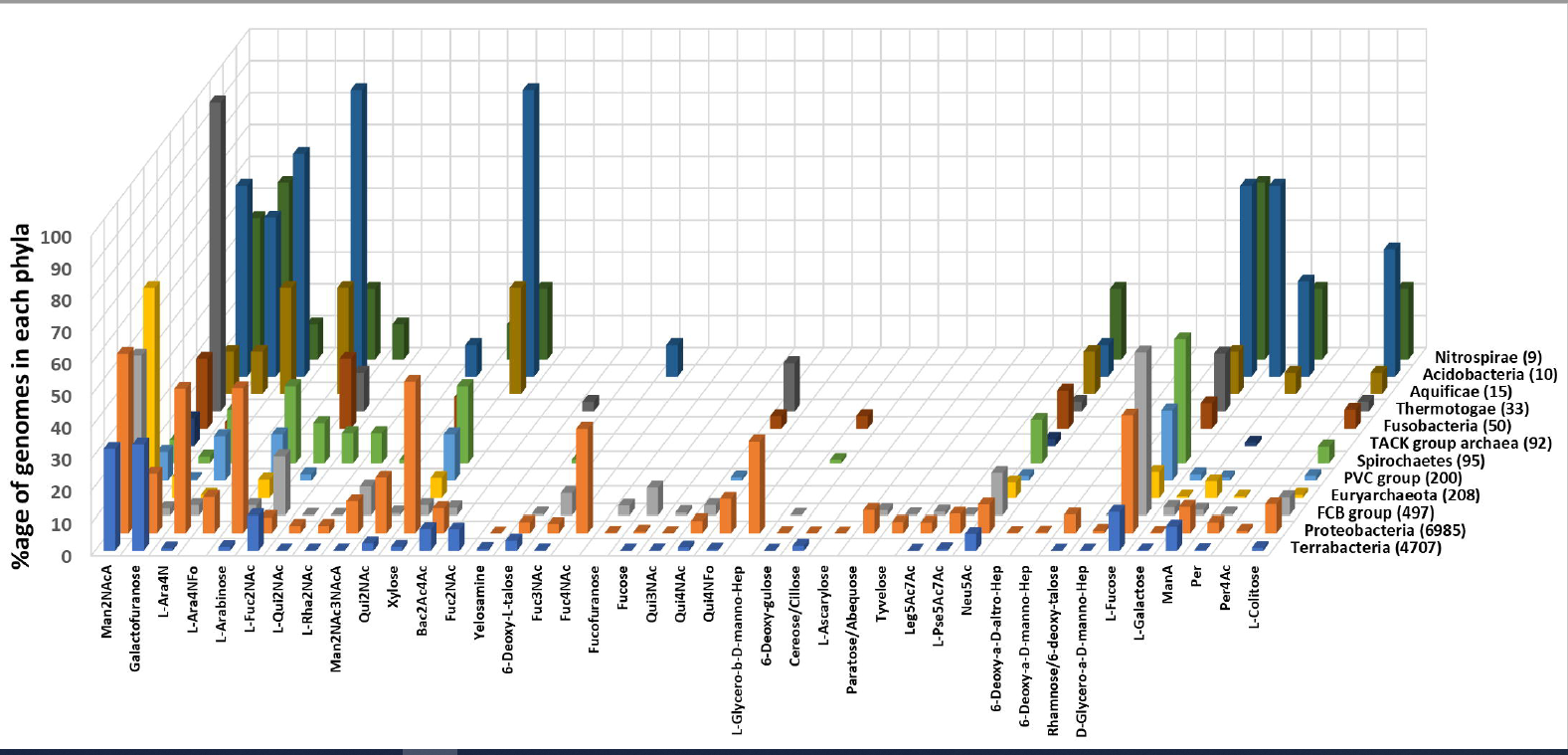Do glycans use the same set of monosaccharides as building blocks in all organisms, the way proteins and nucleic acids do?

Several monosaccharides constitute naturally occurring glycans but it is uncertain if they constitute a universal set like the alphabets of proteins and DNA. Based on the available experimental observations, it is hypothesized herein that the glycan alphabet is not universal. Data on the presence / absence of pathways for the biosynthesis of 55 monosaccharides in 12939 completely sequenced archaeal and bacterial genomes are presented in support of this hypothesis. Pathways were identified by searching for homologs of biosynthesis pathway enzymes. Substantial variations are observed in the set of monosaccharides used by organisms belonging to the same phylum, genera and even species. Monosaccharides are grouped as Common, Less Common and Rare based on their prevalence in Archaea and Bacteria. It is observed that fewer enzymes suffice to biosynthesize the Common group. It appears that the Common group originated before the formation of three domains of life. In contrast, the Rare group are confined to a few species in a few phyla, suggesting that they evolved much later. Fold conservation, as observed in aminotransferases and SDR superfamily members involved in monosaccharide biosynthesis, suggests neo- and sub-functionalization of genes leading to the formation of Rare group monosaccharides. Non-universality of the glycan alphabet begets questions about the role of different monosaccharides in determining an organism’s fitness.




